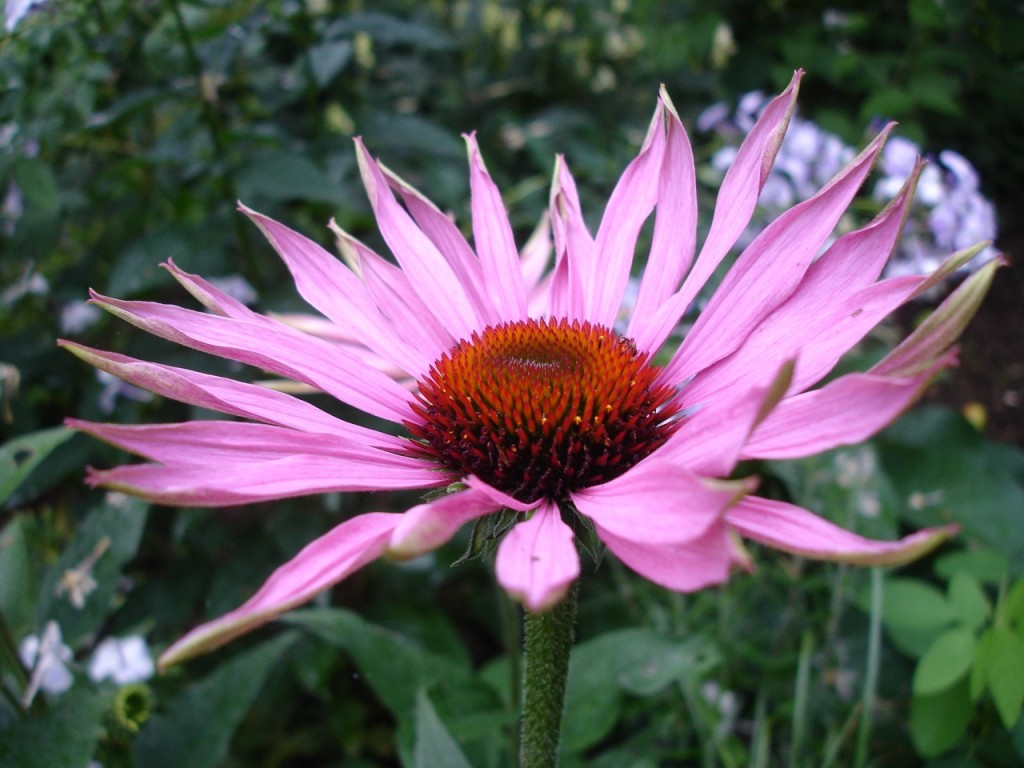
The echinacea plant comes from a family known as coneflowers, and can often be seen adorning home gardens or growing wild in clearings. They are beautiful flowers, with large showy heads of composite flowers on stalks that can reach up to three feet tall. A perennial, they are easy to grow and they spread quite quickly. The flower is a favorite for bees, butterflies and hummingbirds alike.
Echinacea has long been revered for its medicinal benefits. Two species that are most commonly used are E. agustifolia and E. purpurea, the first is considered the strongest while the latter is said to be more persistent. Most commonly used as an immunostimulator to boost the immune system, echinacea has a long history of many uses by the Plains Indians. The herb was used as a wash to treat skin disorders, burns and rashes, as a tea for sore throats and fevers, a poultice for wounds, insect bites, snake bites and stings, and as a mouthwash for sore teeth and gums, pyorrhea and gingivitis. It was said that Native Americans would bathe their arms and hands with the juices of this plant to allow them to withstand great heat – they would grab a piece of meat out of a boiling kettle with their bare hands and feel no pain. They learned of echinacea by observing wounded or sick elk seek it out in the fields, and knew of it as ‘elk root’.



